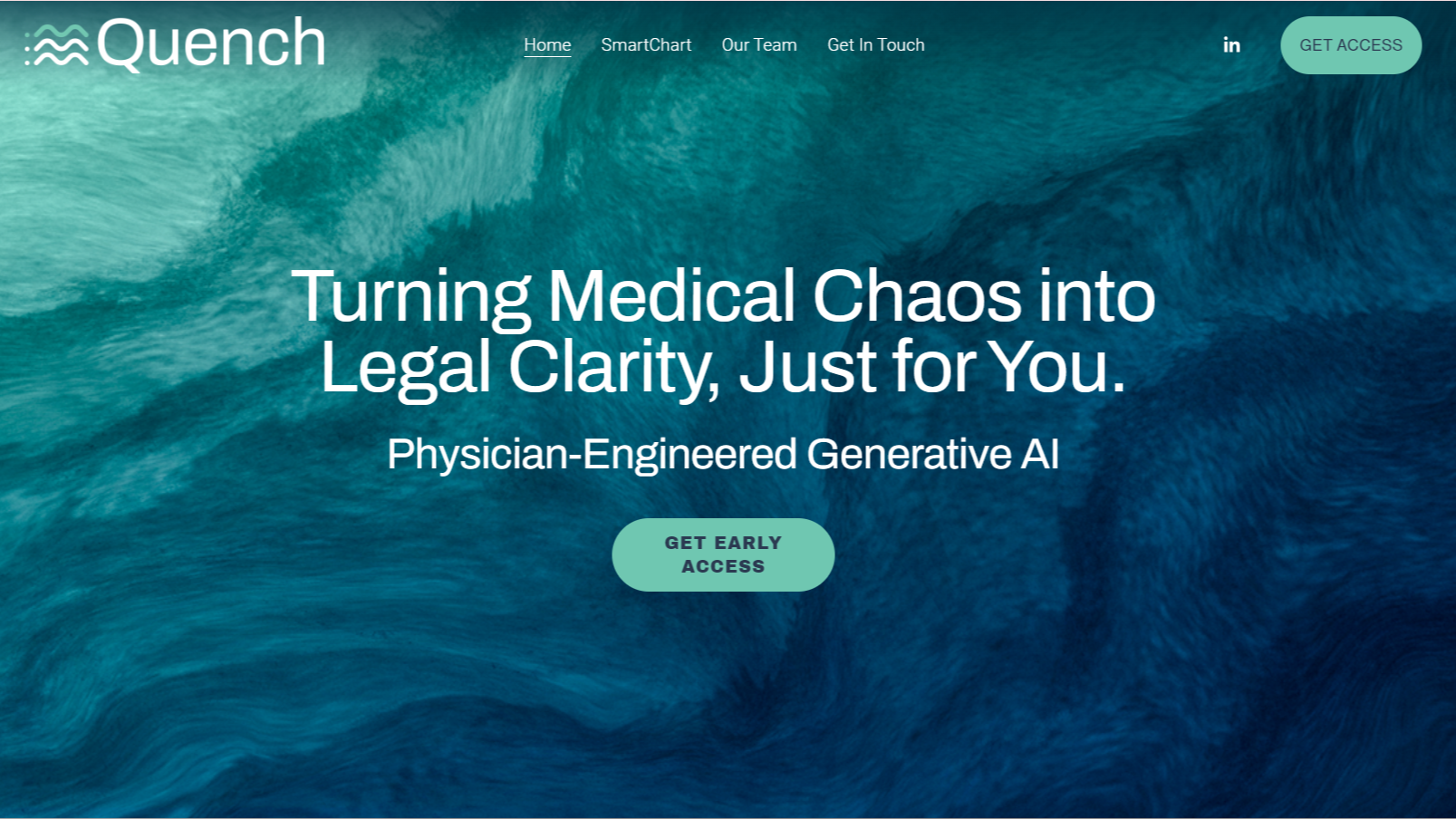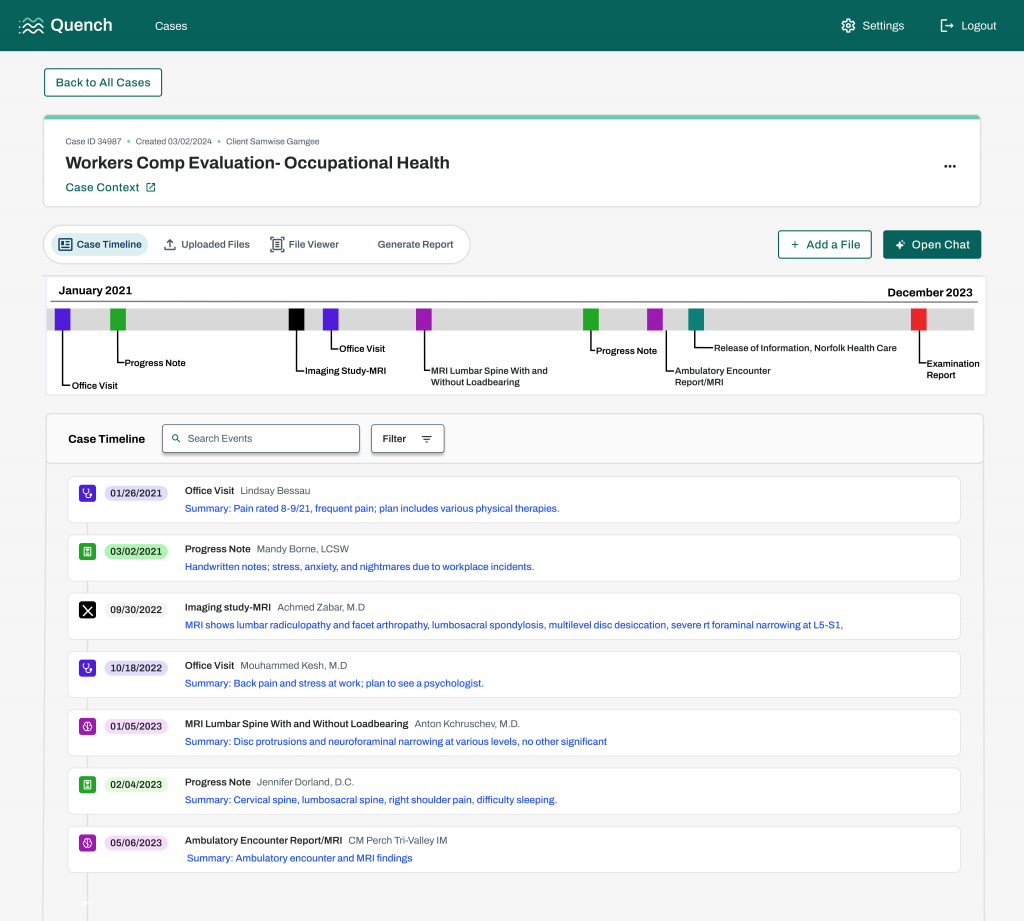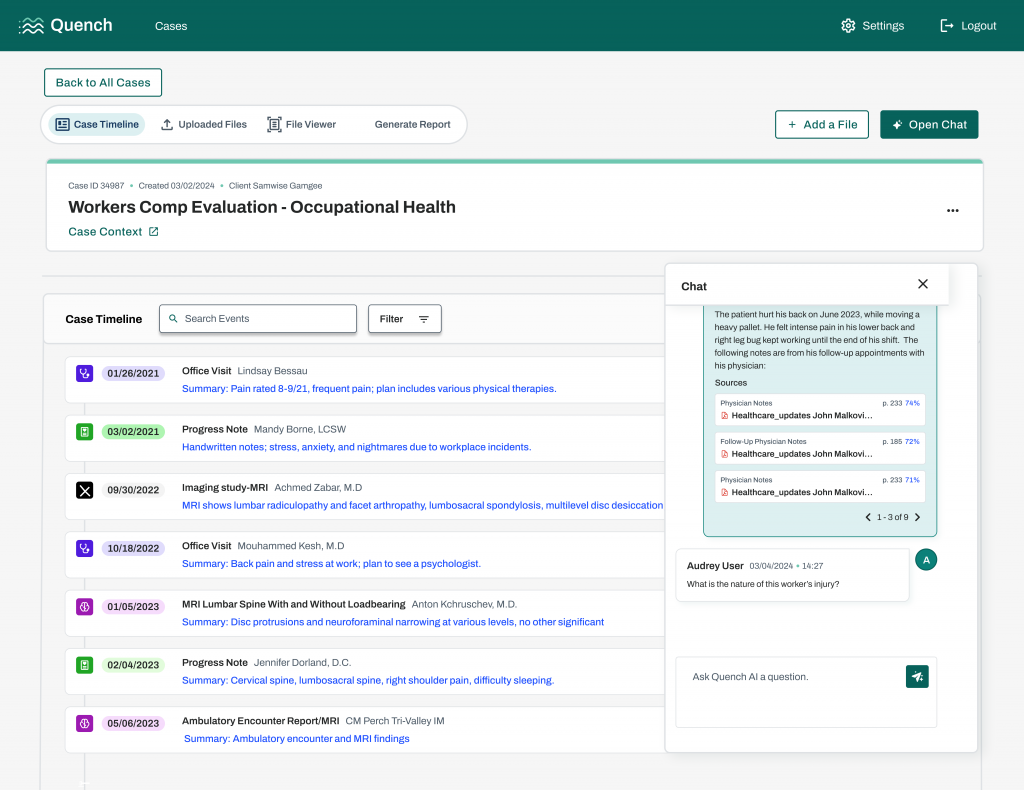A cardiologist with a background in medical technology, computer science and artificial intelligence has launched a product for legal professionals and physician expert witnesses that targets the tedious task of reviewing and analyzing thousands of pages of medical records.
The product, Quench SmartChart, uses generative AI to streamline the medico-legal review process, enabling users to quickly extract, summarize and create chronologies from large, disorganized PDFs of medical records.
The product also includes a natural language chat feature, AskQuench, that lets users interact with and interrogate records to surface essential insights.
The company has just opened a waitlist for those interested in requesting early access to the product in advance of its formal launch.
A Time-Consuming Process
Michael Lesh, the founder and CEO of the company, is a cardiologist and adjunct professor of medicine at the University of California, San Francisco, who stopped practicing medicine to become a medical device entrepreneur.
After launching several successful medical device companies, he turned to digital health and began exploring how large language models could help streamline workflows for physicians reviewing medical records.
As he explored that, he came to realize that the process by which lawyers, expert witnesses and independent medical examiners in medical malpractice, personal injury and workers’ compensation cases review medical records remained antiquated and time-consuming.
Even though records have been digitized, they often come as massive PDFs of thousands of pages, which lawyers and experts have to go through manually just to figure out what is in them, before they even get to reviewing and analyzing them. The process can take many hours or days.
Finding nothing on the market to help with this problem, Lesh and his team of physicians and data scientists decided to adapt the advanced AI they were already building for another product to help in this medico-legal context.
Lesh says that the company developed SmartChart using its own proprietary AI engineering based on his team’s domain knowledge in healthcare. “It’s not ChatGPT, it’s not just a wrapper,” he said. “We have our own very sophisticated engineering.”
Using SmartChart
To use Quench SmartChart, the user starts by uploading the medical records. (They can be in PDF, Word or text formats.)
Using the uploaded records, SmartChart creates a chronology of the patient’s medical history. Note that, during this invitation-only phase of the product’s development, some of the planned features are not yet available. As of now, the chronology is displayed as a list of key events in the patient’s medical history, such as office visits and tests.
The timeline links to the specific records that detail each event, enabling the user to view the original document in context.
A forthcoming version of the product will also include the visual timeline shown in the image below. Users will be able to zoom in on portions of the timeline to focus their review.
A chat feature, AskQuench, enables the user to ask questions about the documents and surface insights. In the example pictured below, the user asks, “What is the nature of this worker’s injury?” AskQuench provides an answer, describing the worker’s injury, how it occurred, and the treatment he has had, with a list of the source documents that support the answer, all hyperlinked to the original document.
Another feature ”coming soon” to Quench will add the ability to generate a report based on the medical records. After reviewing the timeline and asking questions using the chat, the user would then be able to ask Quench to generate a report. It will draft a detailed report covering topics such as the history of the illness or injury, the patient’s previous medical history, current symptoms, and more.
Quench will include several templates for different types of reports, such as one for an independent medical examiner in a worker’s comp case and another for a medical expert in a malpractice case. Plans also call for users, as they review records, to be able to add notes to be included in the report.
Lesh also plans for a future version to be able to identify missing records, so that attorneys and experts can know what is not in the record but should be. For example, the record may show that an MRI was ordered for the patient, but the record contains no report showing that the MRI was ever conducted.
“You can use AI to find things that should be there that aren’t and then list those off,” he said. “From what we hear from attorneys, that can be huge because there’d be one document where it’s a smoking gun and somehow it didn’t get included in the documents.”
Another feature planned for Quench will allow it to retrieve pertinent references from medical literature that can then be incorporated into the final report.
Opening the Waitlist
Until now in developing the product, Lesh has focused on recruiting physicians as users, wanting to be sure that it works for them and meets their requirements.
But as the product moves into this invitation-only phase of its roll-out, Quench is ready to expand its user base to lawyers and legal professionals, particularly those involved in personal injury, medical malpractice, insurance defense, mass torts, and workers’ compensation.
As of now, he is not ready to discuss how the company will charge for this product. But during the invite-only phase, users will not be charged.
For both attorneys and physicians, Lesh says the most important point about SmartChart is that it can allow them to accomplish in 10 minutes what would have required 10 hours.
“There’s just no way that a physician or attorney can go through 5,000 pages and pick up all the things they need to pick up. So rather than 10 hours, it’s ten minutes. And it’s instant – you don’t have to send it overseas and wait for a week or have your paralegal or your nurse assistant go off and spend a couple days looking at it.
“So it’s a huge time saver and more accurate and better information than you would get with a manual review.”
 Robert Ambrogi Blog
Robert Ambrogi Blog

